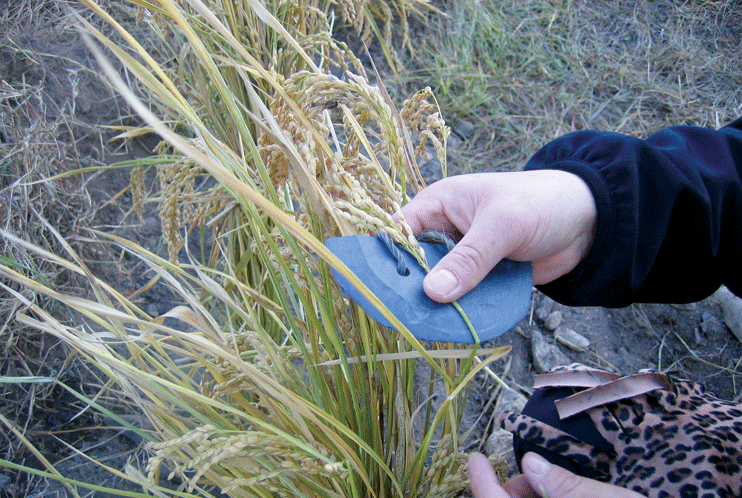Since most of human activities were carried out inside the house, prehistoric people built their house at the location with favoured environmental setting . They dug out the ground and built a sunken dwelling pit structured house. They made a small village with ten houses and built a wooden fence to markthe boundary and to defense with neighboring villages.
They had favoured the low hill or riverside and later made a large scale village on flat land as they began to farm. At the early phase, there was a small size of settlement consisting of two to four houses clustered, but later people had moved to the low land and riverside alluvial plain, forming a large settlement of several hundred houses.

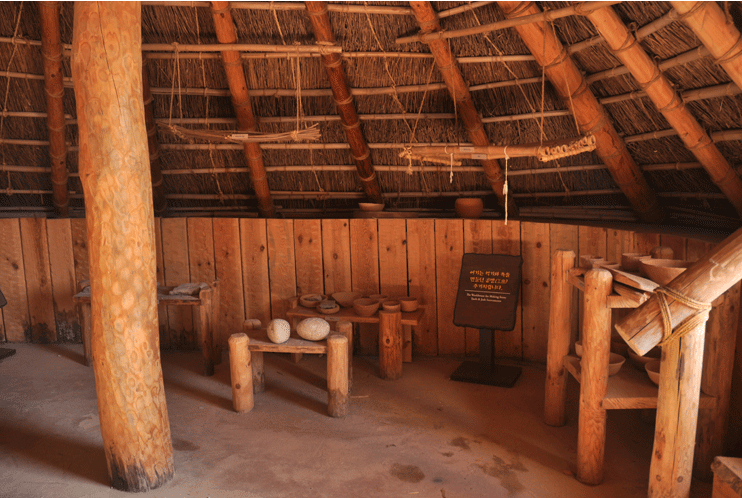
Rice Farming and Dry-Field Farming
Dry-field farming had beenthe main subsistence pattern since the Neolithic, but paddy rice farminghad prospered in theBronze age. Direct evidence of rice farming is carbonized rice grains and plain pottery with rice impression on its body or base. Carbonized rice was excavated in the regions of South Korea except the Namgyeong site in Pyeongyang. A large quantity of carbonized rice was excavated in relics at Songguk-ri, Buyeo in the mid-1970s and since the presence of rice agriculture in the Bronze Age was recognized, remains from Gyo-dong in Gangneung, Heunam-ri in Yeoju, Jodong-ri in Choongju, Daepyeong-ri in Jinju and Sonam-ri in Sancheong were examined. Substential data has accumulated.
Rice field of the Bronze age as the direct evidence of rice farming was exacavated in the Okhyeon site at Mugeo-dong, Ulsan and the Majeonri site in Nonsan. Rice field plot at the Okhyeon site, the Mugeo-dong site, Ulsan is square-shaped or randomly gridedwith a size of 1~3 pyeong scale, but the rice field at Majeon-ri, Nonsan taking advantage of natural land forms and irrigation facility. Increase in numbers of stone axe for lumbering and popularized agricultural such as groove adzes, stone chisels and stone planer knives were evidence that farming was the foundation of economy in the Bronze Age.
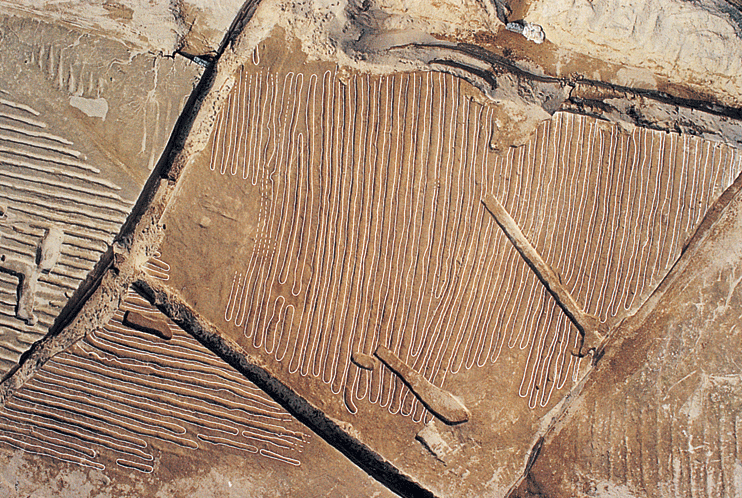
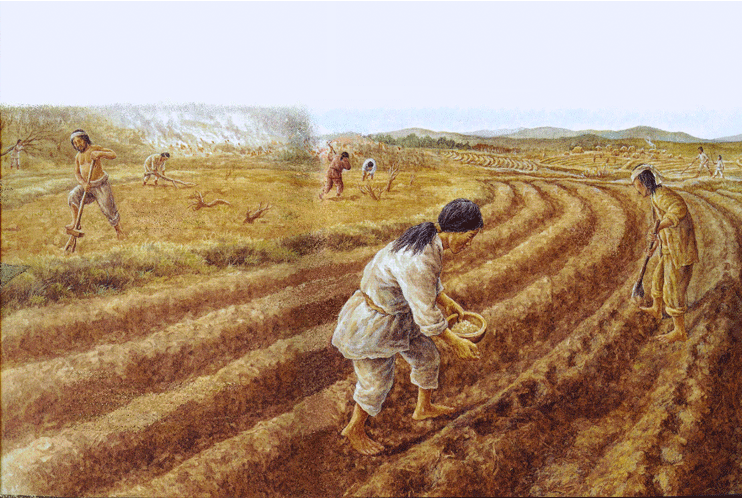
Hunting has been an important subsistence pattern to obtain meat and leather since the Paleolithic. In Paleolithic, slow moving large animals were main game. but in Neolithic, nippy small animals were caught. While spear and axe were short-distance hunting tools, bow and arrow were long-distance hunting tools. Thus frequently found stone arrowhead was new invention to overcome the crisis caused by the shifting in the size of game.
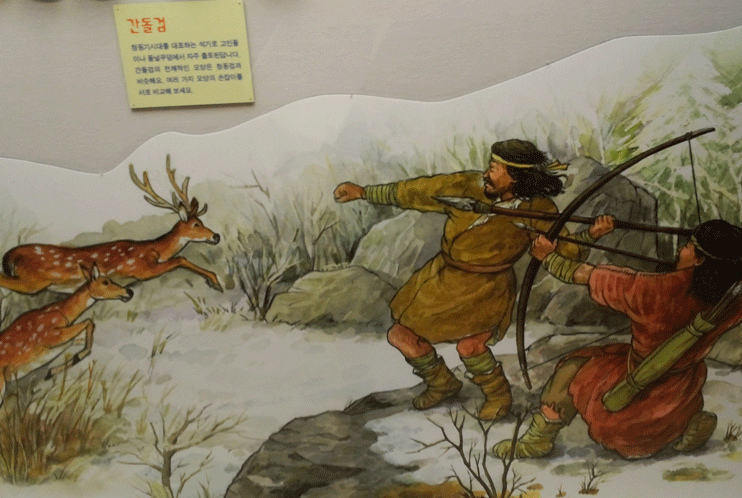
The Korean peninsula surrounded by oceans on three sides has, rich marine resource such as shellfish, seaweed and fish, especially in the rias coast in the southern part. As the relics of shell mounds widely distributed in coast and island regions showed, the Neolithic people developed advanced fishing technique.
Harpoon made by connecting stone arrowhead with long pole to catch fish more effectively and fishing was considered to be one of most stable ways to supply food.
What did they catch? They caught seafood such as shellfish, oyster, seaweed and abalone as well as fish. Fish bones found in the archaeological sites were identified as porgy, cod, bass, red seabream, flatfish, ray, carp and snakehead.
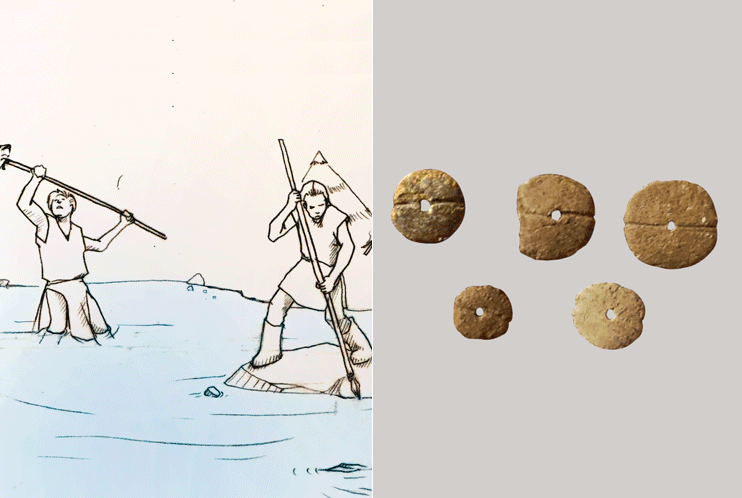
Gathering wild plants had been an important subsistence pattern in Paleolithic, so was in Neoltihic. Especially, acorn was our ancestor's favorite food so that the processing technique to remove astringency of acorn had developed since the Neolithic. Thus collecting season of acorn was autumn and they must have been stored in storage pits during winter.
Evidence of using acorn as a food was confirmed by grinding stone excavated from the settlement site. In addition, wild edible plants were used as vegetable, meal and snack.
